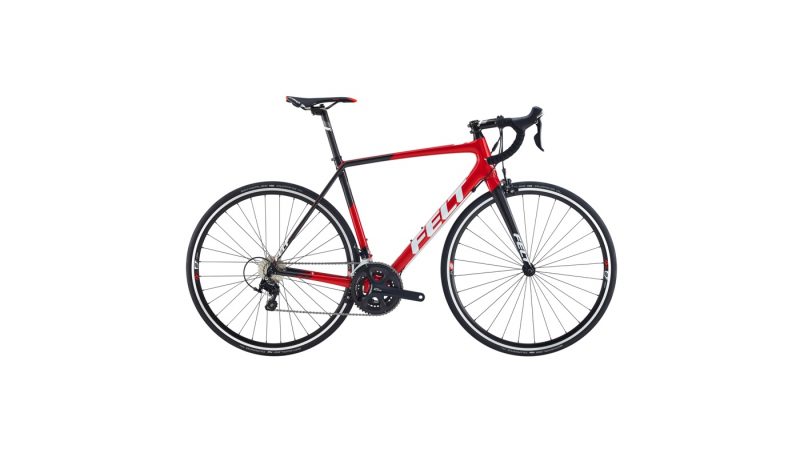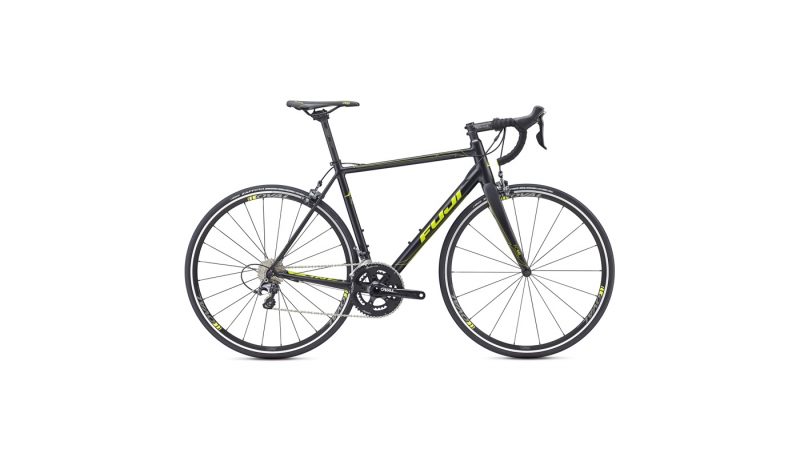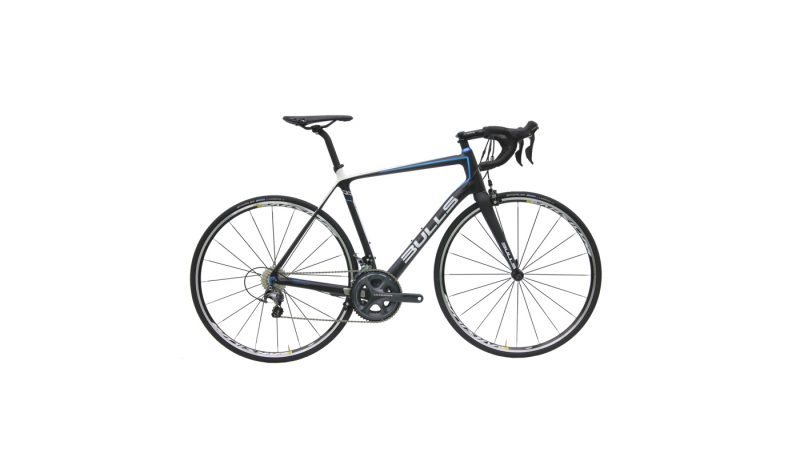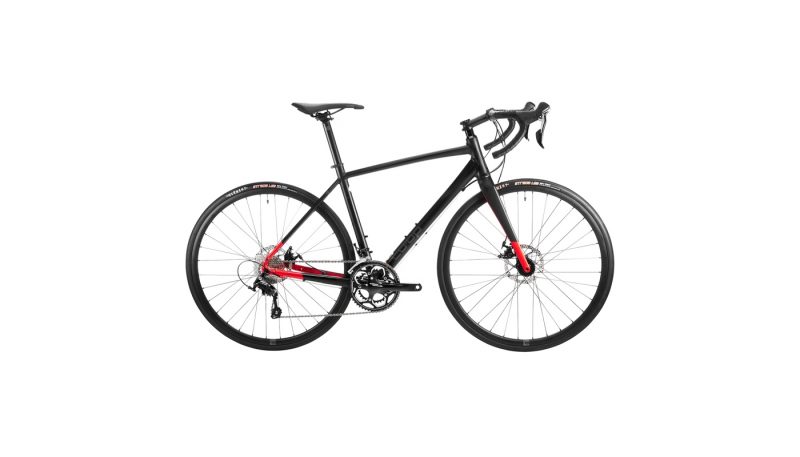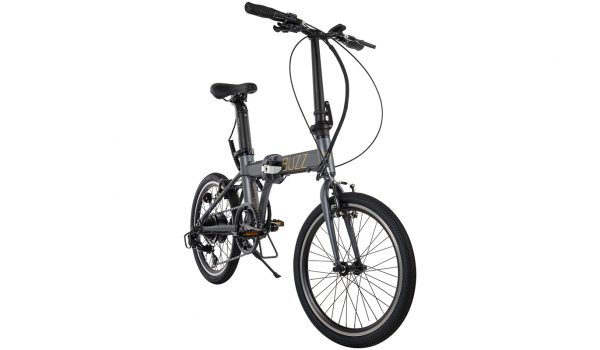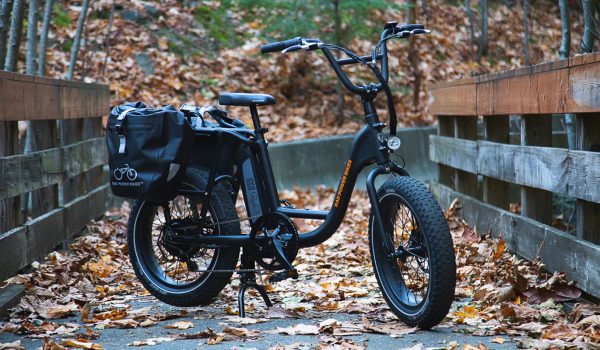As a long time road cyclist, it’s hard to not be a bit astounded by what qualifies as an “entry level” bike these days. A $2,000 bike would now serve even a serious rider as their primary road bike. Putting that history aside, the bikes in this category are serious machines that will offer riders performance and quality.
Road biking is a uniquely phenomenal sport. On occasion I will step away from my road bike for some time to pursue mountain or gravel riding – only to eventually be drawn back and in, and am always pleasantly surprised by how fun it is. Road biking is a blast, because you may or may not have a sports car in your garage, but you can have a sport bicycle – and when you hop on a proper road bike, you are instantly struck by the speed and quickness that is nearly universal in the category. When it is time to climb, there is nothing like a road bike to experience the mountains. While others may be laboring riding up on fat tires, or heavy machines, a nice road bike begs to be taken up hill, and works with you to make the climb “fun.” Descending on a road bike is a unique experience – where the bike’s speed often leaves cars fading from your sunglass-mounted mirror as you are able to negotiate turns faster and more confidently than they are. Of course that is not without risk – there are no airbags on road bikes.
The differentiation of road bikes is on display in our reviews. You can choose between bikes that are created for more utilitarian uses like bike paths, commuting, and even dirt roads. There is a category among the road bikes that focuses on going longer and being more comfortable. Finally, there are the classic designs that focus simply on going fast and being light.
Ride Quality
Road bike ride quality is perhaps more subjective than most categories we evaluate, especially at the entry level market where we don’t break out separate categories for endurance and race oriented bikes. Upon riding five great bikes side-by-side we were struck by the more race oriented bikes, and the incredible quality that was available for a reasonable price. The endurance oriented bikes were equally compelling in their quality and value. In both cases carbon was the more common build material, though the Fuji Roubaix in aluminum is an impressive bicycle. Felt’s FR5 stole the show for being an advanced carbon race oriented road bike for under $2,000. The FR5 would satisfy a serious rider interested in going fast and efficient, and has the ride quality of a higher end bike.
Stiffness-to-Weight
The Bulls’ Night Hawk is a noteworthy bicycle for its stiffness to weight ratio. At 19 pounds it was not the lightest or stiffest bike, but it was the one that enabled the stiffness and weight to work together to provide the most desirable ride in our opinion. There is a quality to the all carbon Bulls that can only be described as fast. When you turn the cranks, the bike pulls forward. It is a great feeling. For that reason we recognize the Night Hawk for stiffness to weight, it is not about how these things are measured separately, but how they work in concert with the rider. They work exceedingly well on the Night Hawk.
Climbing/Efficiency
A solid road bike should climb well and all of these bikes do. The Bulls Night Hawk was an unusually enjoyable uphill ride, thanks to the quality of the build – and perhaps their monocoque (single piece) frame build discussed in detail on their website. It’s not the lightest bike we rode, and it had typical gearing running on its Shimano 105 drivetrain, yet it was divine on the climb. Generally this is a combination of frame quality, overall weight, rider position and components. Those come together on the Bulls Night Hawk to make for an exceptional climbing experience.
Descending/Handling
On the downhill a few characteristics stand out when comparing bikes side-by-side. The first is the quality of the turn or carve. Much like a ski, how the bike enters and exits the turn, as well as how it rockets through the arc, is defined by the materials of the build, the geometry of the frame, especially the front end (head tube angle), and the rider’s position on the bike (which is typically easy to change). Speaking of position, it is a deeply personal issue, and one biased by skill on the bike. The most aggressive riders are down on the drops, the lowest spot on the handlebar, seeking an aerodynamic stance for flying down the hill, whereas most riders will stay on the top of the bar seeking a more upright position, where the wind is a natural brake, and the turning is a bit less responsive. One person’s downhill dream can be another’s downhill nightmare. Position is perspective.
We liked the slightly more upright geometry of the Roubaix on the downhill considering these are entry level bikes. The Roubaix is an enjoyable and confident bike to ride downhill. The carving of the Cannondale Synapse as a result of the asymmetrical frame design was also noteworthy – this bike slays the corners and rails the descents. The other thing that a rider will immediately notice on the downhill is the brakes, which we cover in the next section.
Components: Drivetrain/Shifting/Brakes
We had Shimano homogeneity across our entry level road bike category. The Shimano 105 group is good, and has a history of great performance over the long haul. The bargain priced Fuji Roubaix was built with Shimano Ultegra, which is a meaningful step up, with lighter and quicker shifts, and fantastic hydraulic disc brakes, which are a real difference maker when you need to stop quickly. Every bike has 11-speeds, and provides a great gearing spread for both going uphill and cranking on the flats and downhills. Disc brakes are welcome in this category, and better still when they are hydraulic, offering consistent, powerful and quiet braking power versus their cable actuated brethren or old school calipers.
Speaking of brakes, only a few things compare to the thrill of descending on a nice road bike. Great brakes are a key to descending confidently, and we can likely agree at this point that hydraulic disc brakes are the way to go – advantage Fuji Roubaix. Shimano Ultegra levers and Shimano RS505 hydraulic disc brakes featuring 160 front and rear rotors are worthy of praise. Disc brakes make descending much, much more fun, and more importantly they enable more reliable and consistent stopping. They have less fade, perform better through many weather conditions, are often more quiet, and they don’t heat the rims of your wheels. What’s not to like? The Co-Op ARD 1.2 also comes with disc brakes, which are mechanical (cable actuated versus hydraulic fluid). We still preferred those brakes to those standard “caliper” road bike brakes equipped on the other bikes we’ve tested.
Wheelset
Wheelset quality requires some consideration on likely use. The Bulls Night Hawk has the wheelset we preferred the most, featuring Shimano 105 hubs and Mavic rims (straight lace spokes in front, cross laced in the rear). Our experience tells us this set of wheels will perform well over time, and are a quality addition. Otherwise we saw weight and cost saving wheels, which may or may not meet the needs of the heaviest rider, or the weekend tourer, but will certainly perform. Wheels are the easiest upgrade to make when the time comes and can be switched out depending on need. Many riders have race wheels, gravel wheels, and/or wheels for training rides.
Value
There is so much value in this category, it’s difficult to favor one over the other. The Felt FR5 stands out for raw value in that it is a full-fledged carbon race bike weighing 17 pounds priced under $2,000. The Fuji Roubaix also stands out for creating an aluminum framed bike with Ultegra components cheaper still. Co-Ops ARD is the least expensive and offers a lot of bike for the money. All bikes in this category reveal the extent to which quality and technology has entered the Entry Level category.
Test Methods
We reached out to many manufactures, ultimately reviewing five brands of road bike, with some diversity and some overlap. We wanted to see aluminum against carbon, big bike brand against boutique manufacturer, factory direct versus standard retail-oriented brands. Our road testing took place in Colorado and California, which when combined has the best of all road biking challenges: towering climbs, massive descents, and endless flats and rollers to push these bikes to their limits.
The bikes were put through their paces riding through the coastal mountains and the redwoods of California, testing their grip in slick and slippery road conditions by the seashore and up into the Redwood Rain through the twistiest of descents. Colorado offered opportunities for massive climbs and descents, including the famed Morgul-Bismark road loop which is used on every road bike we tested because of its variety of terrain, 18 percent grade on “The Wall,” and its notorious wind. In all we rode over 750 miles on these bikes, climbing over 75,000 feet of vertical.
What is a Road Bike?
Road bikes were once fairly uniform machines that were essentially racing bikes, but over time they have become more specialized, focused generally on the categories of race and endurance. The primary difference between race and endurance is the positioning and bike geometry, where race bikes are aggressively positioned – forward in stance with austere geometry that seeks to maximize efficiency and speed – at the cost of comfort. Endurance bikes on the other hand have a more comfortable geometry, often use materials integrated into the bike to soften the ride, and will likely accept wider tires and use more comfort oriented parts like saddle and handlebar. But don’t be fooled, comfortable can be fast, and in some cases faster because it can save your body from the abuse of a long day in the saddle.
When looking at a road bike today, the question to ask is whether weight is paramount, or whether comfort is your primary consideration. You can have them both of course, but that will cost you. At the entry level price point the differences are more stark, with bikes more obviously oriented towards one specialty or the other, whereas at the highest levels you could absolutely ride an endurance bike in any race.
We sought out some diversity in entry level bikes to compare more endurance oriented machines with aggressive race oriented bikes. We tried to keep the costs under $2,500 and endeavored to offer different brands, and even include the direct consumers brands that are becoming more ubiquitous (and disruptive) in the cycling industry. Our core finding was that all bikes in the category were surprisingly good, some of which shockingly so.
Terms
Here are the definitions of a few terms and technologies referenced throughout these reviews.
Through-axles refer to an axle that is thicker and more rigid that the former dominant technology, the quick release axle or QR seen on most bikes. Many folks prefer the through-axles for stiffness and ease of use, though they may or may not fit with the bike rack on your car. We review those as well.
Disc Brakes refer to the more contemporary braking system common on bikes today. The previous dominant technology was a caliper braking system. Disc brakes are either actuated by a cable or by hydraulic braking fluid, and are generally easy to spot by the disc mounted near the center of the wheel.
Most of the bikes we reviewed were carbon, and monocoque carbon. Carbon is simply reinforced plastic, and monocoque carbon frame technology refers to a single piece of plastic as opposed to several pieces of plastic that have been glued together. A claim of a monocoque frame is not always indicative of a single piece of plastic, and could refer to a different style of bonding the frame together.
Bottom brackets are the bearings and spindle that accept the cranks and crank arms (where the pedals attach).
A group(o) is a colloquial term for groupset, which is the collection of parts that make up the component group usually consisting of the brakes, shifters, cranks, cassette, derailleur, chain and bottom bracket. Basically the stuff that makes you go.
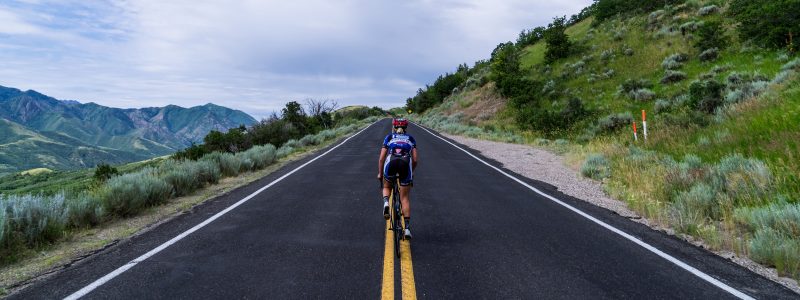 Image Courtesy Felt Bicycles
Image Courtesy Felt Bicycles








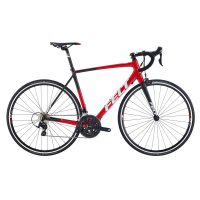
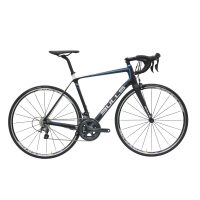
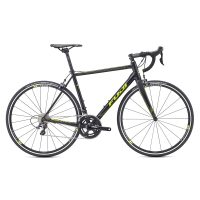
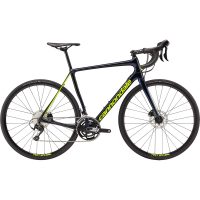
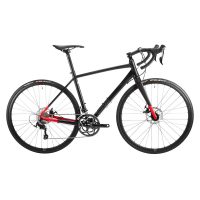
 90
90 